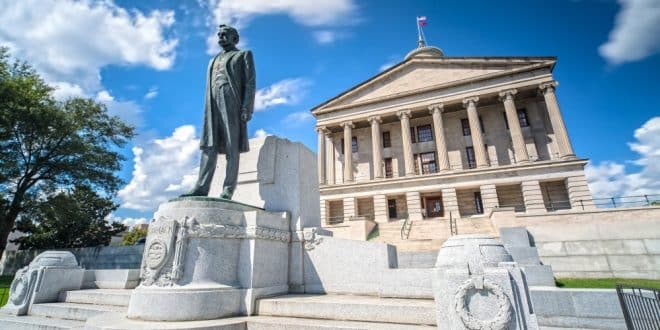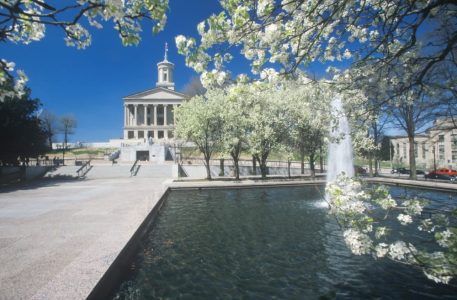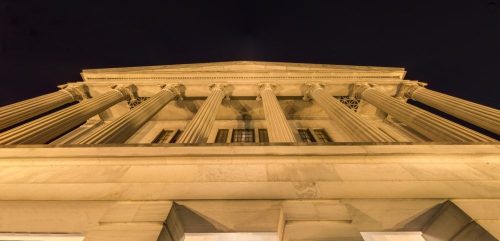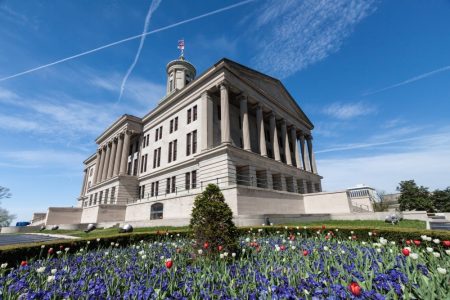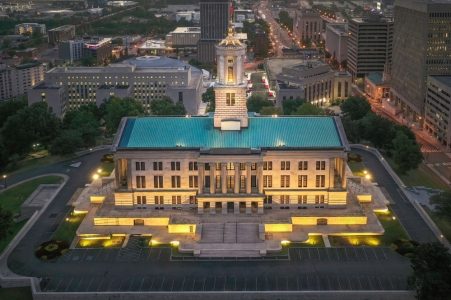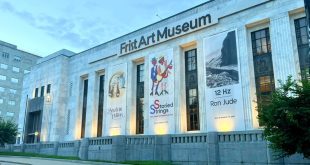The Tennessee State Capitol, located in the heart of Nashville, is a prominent symbol of Tennessee’s political history and architectural grandeur. Perched atop Capitol Hill, this majestic building serves as the seat of government for the state, housing the Tennessee General Assembly, the Governor’s office, and parts of the judicial branch. The Capitol’s origin, history, and present-day use provide a fascinating narrative that reflects the state’s evolving identity and governance.
The Tennessee State Capitol was designed by the prominent Philadelphia architect William Strickland, who is known for his work in the Greek Revival architectural style. The cornerstone of the Capitol was laid on July 4, 1845, and construction continued over the next fourteen years. Strickland, who considered the project his masterpiece, passed away in 1854 before its completion. As a testament to his dedication, he was buried in a niche in the building’s north façade, a rare honor that symbolizes his significant contribution to Tennessee’s architectural heritage.
Constructed primarily from Tennessee limestone, the Capitol building is a prime example of Greek Revival architecture, characterized by its elegant columns, detailed stonework, and classical proportions. Its design was inspired by the Choragic Monument of Lysicrates in Athens, Greece, showcasing Tennessee’s aspirations to emulate the ideals of democracy and governance associated with ancient Greece.
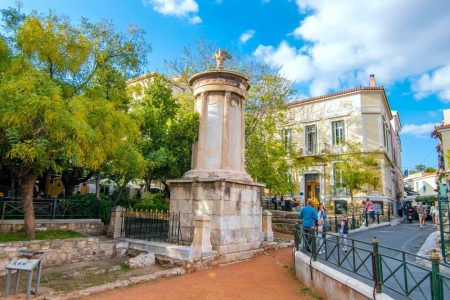
Historical Significance
Since its completion in 1859, the Tennessee State Capitol has played a central role in the political, social, and cultural life of the state. During the Civil War, Nashville was occupied by Union forces in 1862, and the Capitol served as a military headquarters for the Union Army. This period was marked by intense conflict, political intrigue, and a struggle for control over Tennessee, a border state with divided loyalties. The Capitol became a strategic point for both Union and Confederate forces due to its elevated position and symbolic value.
The Capitol has witnessed numerous significant events in Tennessee’s history. It was here that Governor William G. Brownlow declared the state’s loyalty to the Union after the Civil War. Additionally, the building was the site of heated debates over key issues such as women’s suffrage, civil rights, and segregation. Notably, in 1920, Tennessee became the 36th state to ratify the 19th Amendment to the United States Constitution, granting women the right to vote, following a tense and dramatic vote in the Tennessee House of Representatives. The Capitol grounds bear a tribute to this historic moment, marking Tennessee’s pivotal role in shaping American democracy.
Today, the Tennessee State Capitol continues to serve as the seat of government for the state of Tennessee. The building houses the offices of the Governor and the Tennessee General Assembly, comprising the House of Representatives and the Senate. Legislative sessions are held in the Capitol, where lawmakers convene to debate and pass laws that shape the future of the state.
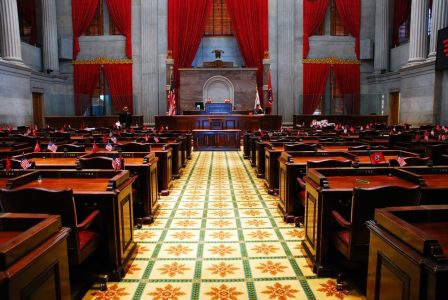
In addition to its governmental functions, the Capitol is a historical landmark and popular tourist attraction. Visitors can explore the building’s beautifully preserved chambers, admire its architectural details, and learn about Tennessee’s political history through guided tours. The Capitol grounds also feature several monuments and memorials, including statues of President Andrew Jackson, President James K. Polk, and Senator Edward Ward Carmack, offering a deeper insight into the figures who have shaped Tennessee’s history.
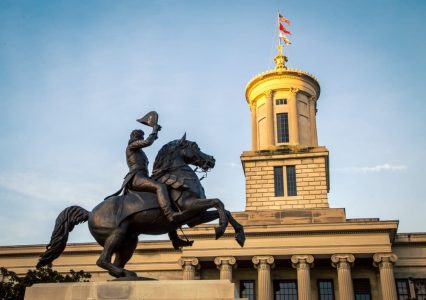
Notable Stories and Anecdotes
The Tennessee State Capitol has been the setting for several notable and sometimes dramatic stories throughout its long history. One of the most famous tales involves the ratification of the 19th Amendment in 1920. The fate of the amendment was uncertain until a young legislator named Harry T. Burn changed his vote to support suffrage after receiving a letter from his mother urging him to “be a good boy” and do the right thing. His change of heart provided the crucial vote needed for ratification, making Tennessee the “Perfect 36” and ensuring the amendment’s passage into law.
Another fascinating story relates to the building’s construction. During the construction of the Capitol, a dispute arose between William Strickland and Samuel D. Morgan, the head of the building commission. This disagreement became so heated that it led to a physical altercation, resulting in Morgan chasing Strickland with a shovel. Despite these conflicts, both men are remembered for their dedication to the project, and Morgan’s efforts are commemorated with a statue on the Capitol grounds.
In addition to these historical anecdotes, the Capitol is also known for its architectural quirks. The building is said to have been constructed without proper plans, leading to the discovery of hidden chambers and secret passageways over the years. These hidden elements add an air of mystery and intrigue to the Capitol, inviting both historians and the public to explore its depths.
TENNESSEE STATE CAPITAL
600 Dr. M.L.K. Jr Blvd
Nashville, TN 37243
Hours:
Monday thru Friday: 9 am–4 pm
Saturday & Sunday: Closed
AREA TOURS
The Ghosts of Nashville Night-Time Walking Tour

See a new perspective on Nashville on this delightfully spooky, after-dark walking tour. Meet at the Tennessee State Capitol, set off with just a small group for company, and follow your guide: you’ll see local landmarks ranging from supposedly haunted churches and music venues to drinking dens and more. As you go, hear eerie ghost stories, and learn more about Nashville, from the Civil War up to the modern day….MORE
 Nashville.com Visitors Guide To Nashville, TN
Nashville.com Visitors Guide To Nashville, TN
